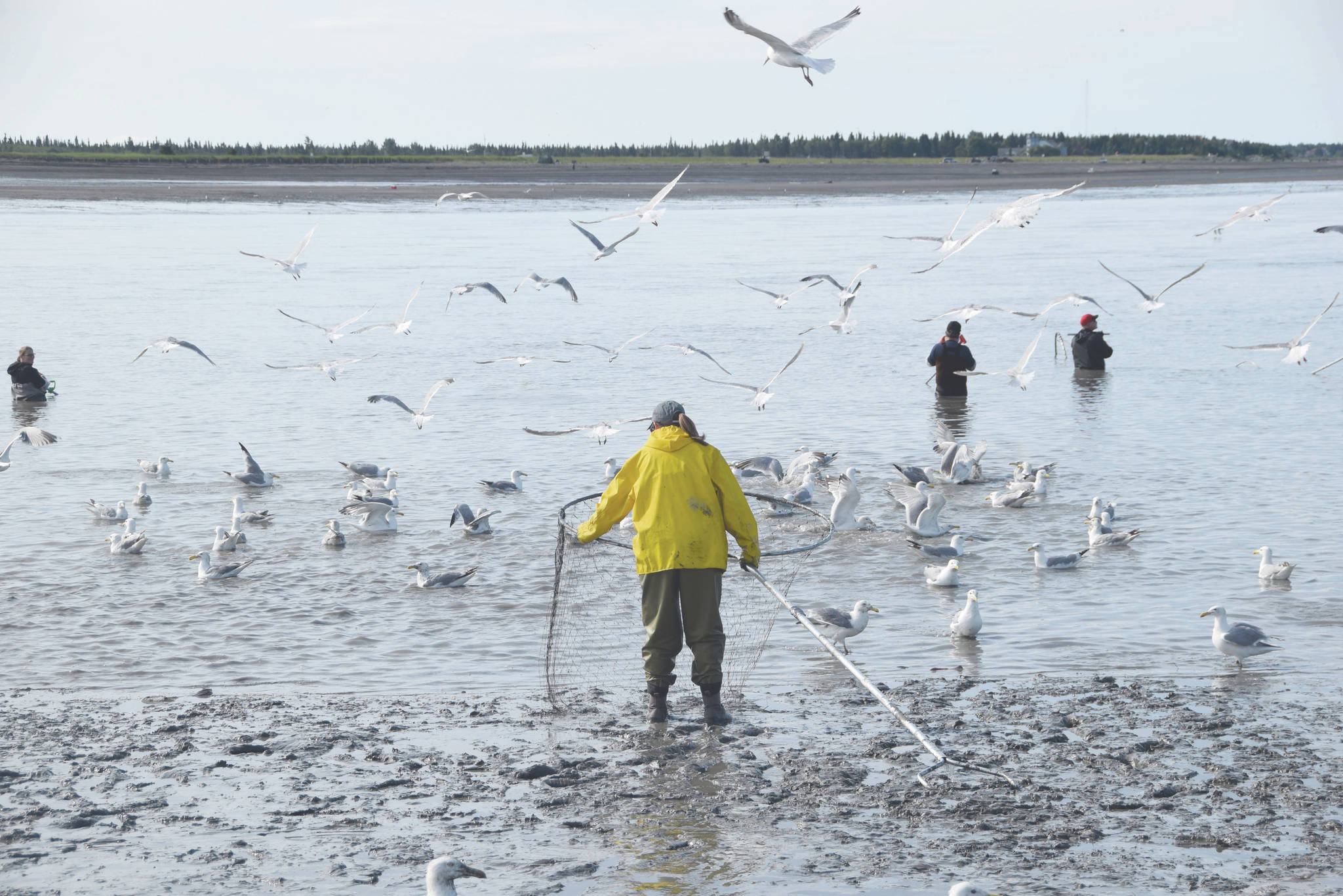The shores of the Kenai and Kasilof rivers could be less crowded than usual this year due to a recent decision by the Alaska Board of Fisheries to open areas of the Susitna River to dip netting.
Last Thursday, the Board voted to adopt Proposal 234, which adds a section to the Upper Cook Inlet Personal Use Salmon Fishery Management Plan allowing and establishing guidelines for dip net fishing on the Susitna River. The proposal was adopted with substitute language that was crafted by the Alaska Department of Fish and Game and reduced the number of open days from the original proposal.
The proposal was submitted by the Matanuska Valley Fish and Game Advisory Committee, which cited that residents of the Matanuska-Susitna Valley have expressed a desire to have a Personal Use dip net fishery on the Susitna River so that they don’t have to drive to the Kenai or Copper Rivers.
The proposal adds a new subsection to 5 AAC 77.540 which specifies the new times, locations and limits for dip netting on the Susitna River.
According the proposal, salmon may be taken from the river by dip net from July 10 through July 31 on Wednesdays and Saturdays from 6 a.m. to 11 p.m.
Dip netting will be allowed between the ADF&G regulatory markers located 1 mile downstream from the Susitna Station to the ADF&G regulatory markers on the northern tip of the Bell Island/Alexander Creek cutoff.
Fish caught in the newly established Susitna River dip net fishery will be subject to the annual limit for all Upper Cook Inlet personal use salmon fisheries. The annual limit is 25 salmon and 10 flounder for each permit holder and 10 salmon for each additional household member, according to the ADF&G website.
King salmon retention will be prohibited in this fishery. Any northern pike caught while dip netting cannot be released back into the water alive. Board member John Wood attempted to amend the proposal to also prohibit the retention of sockeye salmon, but his amendment failed 3-4. Board members Wood, Marit Carlson-Van Dort and John Jensen voted in favor of the amendment.
Wood said that he was concerned about negatively impacting the sockeye salmon numbers in the Susitna River and cited the Board’s recent decision earlier that week to de-list the Susitna River Sockeye salmon as a “stock of concern.”
“I do not wish to be a part of any establishment of any fishery that’s going to target or allow intercept of sockeye until I see the actual numbers start going up in their respective weirs,” Wood said.
Dave Rutz, Division of Sport Fish director for ADF&G, noted that the new dip net fishery is relatively remote and is not likely to attract enough people to negatively impact the sockeye returns on the Susitna River.
“This is a roadless area. We’re not going to have to worry about big Winnebagos and that type of thing,” Rutz said. “It’s an 18-mile riverboat trip, one way, to a remote designation.”
Fishery managers have the ability to alter the permitted times or areas or close the fishery based on salmon abundance, according to the language in the proposal.
If ADF&G projects that both sockeye and coho salmon will be above the upper end of all Susitna River escapement goals, the ADF&G commissioner may issue an emergency order extending the use of this fishery through Aug. 31.
Proposal 234 was adopted by a vote of 5-2, with Board members Wood and Gerad Godfrey voting against it.
The Board of Fisheries will continue to meet in Anchorage to discuss proposed regulatory changes until Feb. 20, 2020.
Audio recordings of the meetings are streamed live and posted afterwards on the Board’s website.

